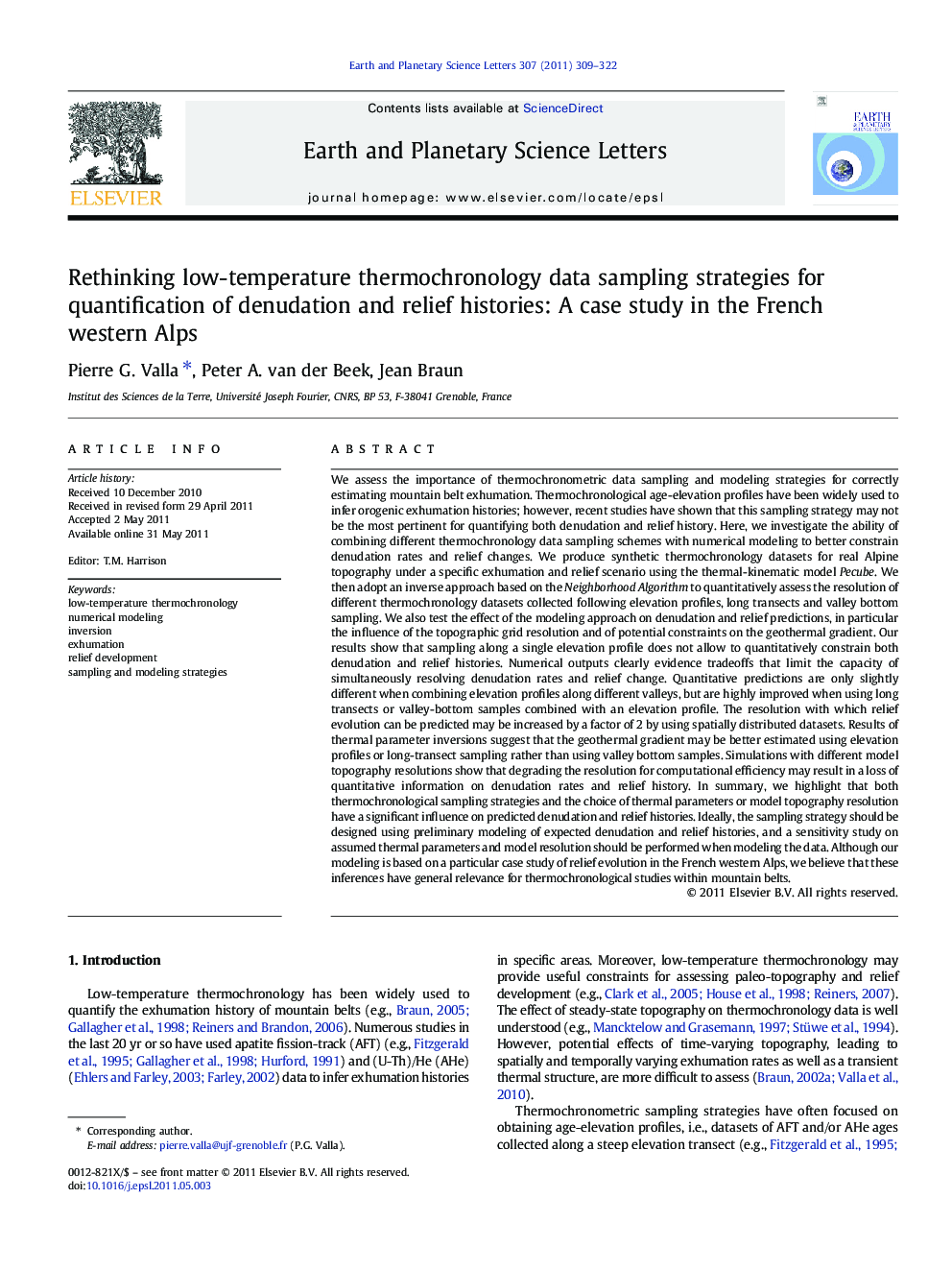| کد مقاله | کد نشریه | سال انتشار | مقاله انگلیسی | نسخه تمام متن |
|---|---|---|---|---|
| 4677901 | 1634825 | 2011 | 14 صفحه PDF | دانلود رایگان |

We assess the importance of thermochronometric data sampling and modeling strategies for correctly estimating mountain belt exhumation. Thermochronological age-elevation profiles have been widely used to infer orogenic exhumation histories; however, recent studies have shown that this sampling strategy may not be the most pertinent for quantifying both denudation and relief history. Here, we investigate the ability of combining different thermochronology data sampling schemes with numerical modeling to better constrain denudation rates and relief changes. We produce synthetic thermochronology datasets for real Alpine topography under a specific exhumation and relief scenario using the thermal-kinematic model Pecube. We then adopt an inverse approach based on the Neighborhood Algorithm to quantitatively assess the resolution of different thermochronology datasets collected following elevation profiles, long transects and valley bottom sampling. We also test the effect of the modeling approach on denudation and relief predictions, in particular the influence of the topographic grid resolution and of potential constraints on the geothermal gradient. Our results show that sampling along a single elevation profile does not allow to quantitatively constrain both denudation and relief histories. Numerical outputs clearly evidence tradeoffs that limit the capacity of simultaneously resolving denudation rates and relief change. Quantitative predictions are only slightly different when combining elevation profiles along different valleys, but are highly improved when using long transects or valley-bottom samples combined with an elevation profile. The resolution with which relief evolution can be predicted may be increased by a factor of 2 by using spatially distributed datasets. Results of thermal parameter inversions suggest that the geothermal gradient may be better estimated using elevation profiles or long-transect sampling rather than using valley bottom samples. Simulations with different model topography resolutions show that degrading the resolution for computational efficiency may result in a loss of quantitative information on denudation rates and relief history. In summary, we highlight that both thermochronological sampling strategies and the choice of thermal parameters or model topography resolution have a significant influence on predicted denudation and relief histories. Ideally, the sampling strategy should be designed using preliminary modeling of expected denudation and relief histories, and a sensitivity study on assumed thermal parameters and model resolution should be performed when modeling the data. Although our modeling is based on a particular case study of relief evolution in the French western Alps, we believe that these inferences have general relevance for thermochronological studies within mountain belts.
Research highlights
► Traditional sampling strategies of thermochronology data not the most pertinent.
► New strategies proposed and tested using a sophisticated inversion method.
► Leads to improved resolution in exhumation and relief development estimates.
► Modeling-strategy tests to best sample and interpret thermochronology data.
Journal: Earth and Planetary Science Letters - Volume 307, Issues 3–4, 15 July 2011, Pages 309–322